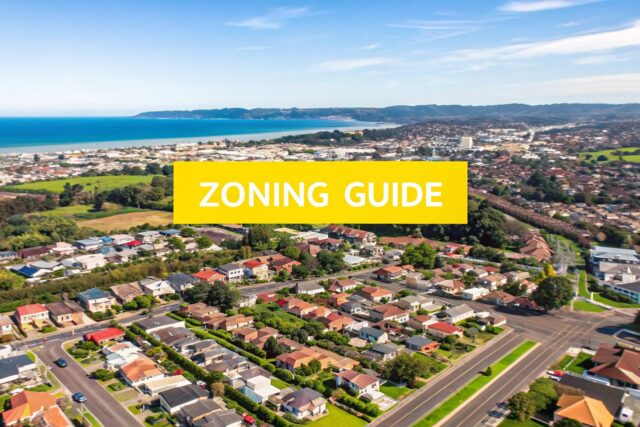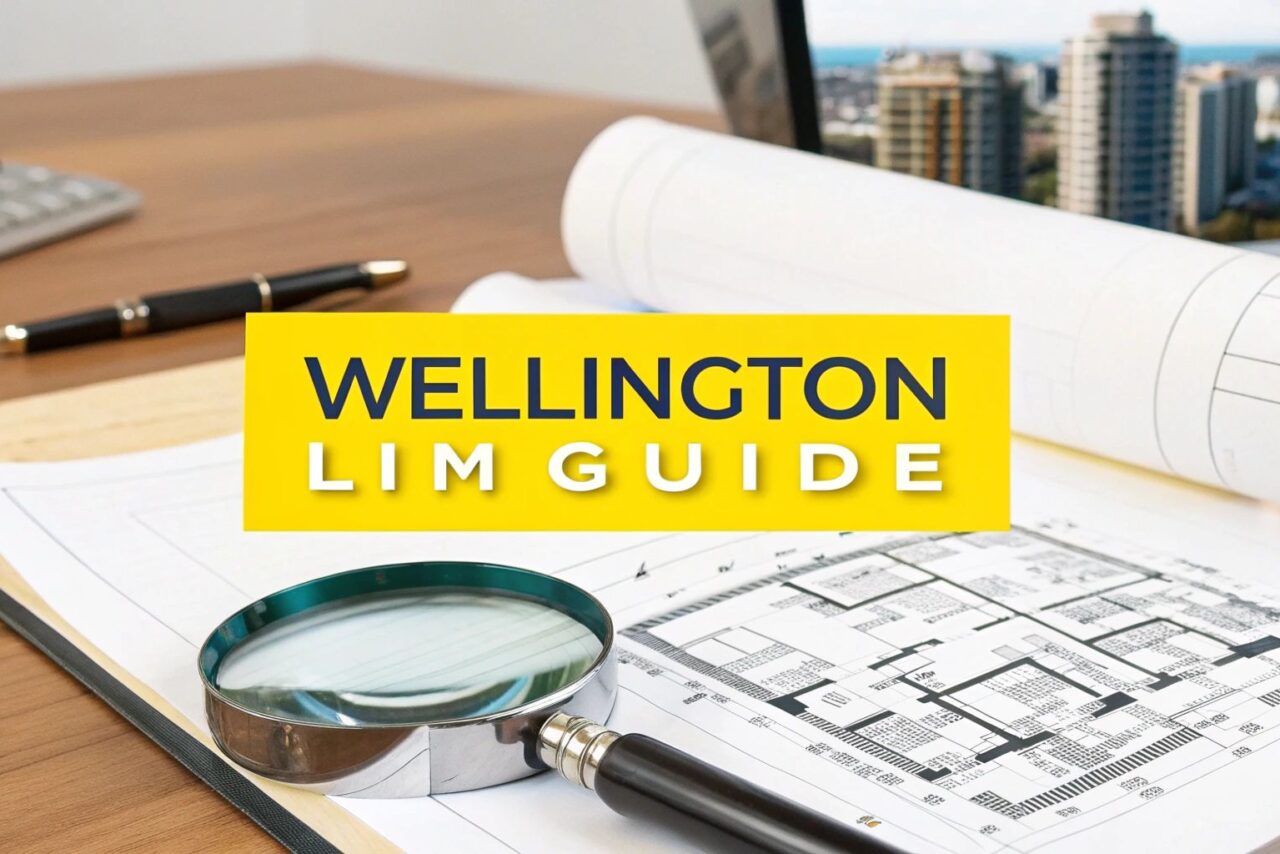
Think of a Land Information Memorandum (LIM) report as the official story of a property, straight from the files of the Wellington City Council. It’s a crucial document that lays out all the key details and history the council knows about a place, from building consents right through to potential hazards. Understanding what’s inside a LIM is a vital step for anyone buying or selling in Wellington’s dynamic property market.
Quick note before we jump in: The information here is just for general interest, it’s not official advice. Some of it’s based on opinion or pulled from property news sources that share useful tips, we do our best but we can’t guarantee it’s all spot-on or fully complete.
The Role of a LIM Report in Your Property Journey
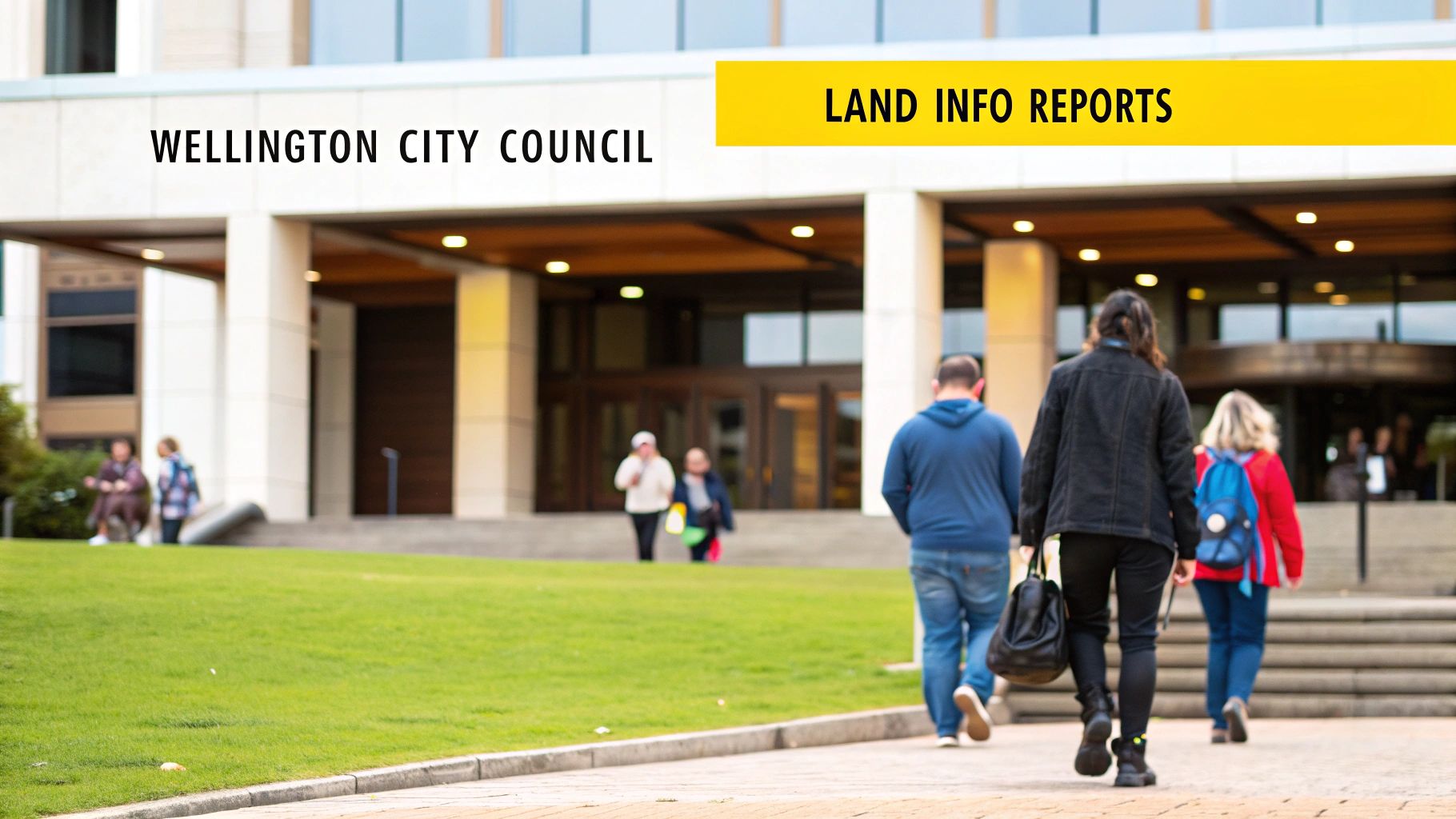
Whether you’re buying your first home in Brooklyn or selling a cherished family property in Karori, the LIM report will be one of the most important documents you encounter. It’s much more than just paperwork; it’s a tool for transparency. It provides an official record of information that could genuinely affect your final decision or the property’s value.
Why It Matters for Buyers
For anyone looking to buy, a LIM is a cornerstone of good due diligence. It uncovers the hidden history of a property, flagging potential red flags long before you sign on the dotted line. A thorough read can reveal issues that are impossible to spot during a viewing, giving you genuine peace of mind.
Key things a buyer can learn include:
- Consent History: Was that amazing new deck on the Vogeltown house or the stylish kitchen in that Te Aro apartment properly consented? The LIM will tell you what the council has on file.
- Land Information: You’ll uncover details about potential hazards. This could be anything from erosion risk in hilly suburbs like Wadestown to flooding information for properties in lower-lying areas.
- Compliance Issues: Find out if any notices or orders have ever been issued against the property, such as requirements for earthquake strengthening in older buildings, which are common in suburbs like Thorndon and Mount Cook.
Why It Matters for Sellers
If you’re a homeowner preparing to sell, providing an up-to-date LIM report to interested buyers is a sign of good faith. It immediately builds trust and can help make the sales process smoother by answering a buyer’s initial questions upfront.
By having a LIM ready, you can:
- Address Issues Proactively: Discover any surprises before they have a chance to complicate negotiations.
- Increase Buyer Confidence: It shows you have nothing to hide, which makes potential buyers feel more comfortable and ready to make a strong offer.
- Speed Up the Sale: You can avoid the delays that often happen when buyers have to order and wait for the report from the council.
Decoding the Key Information in Your LIM Report
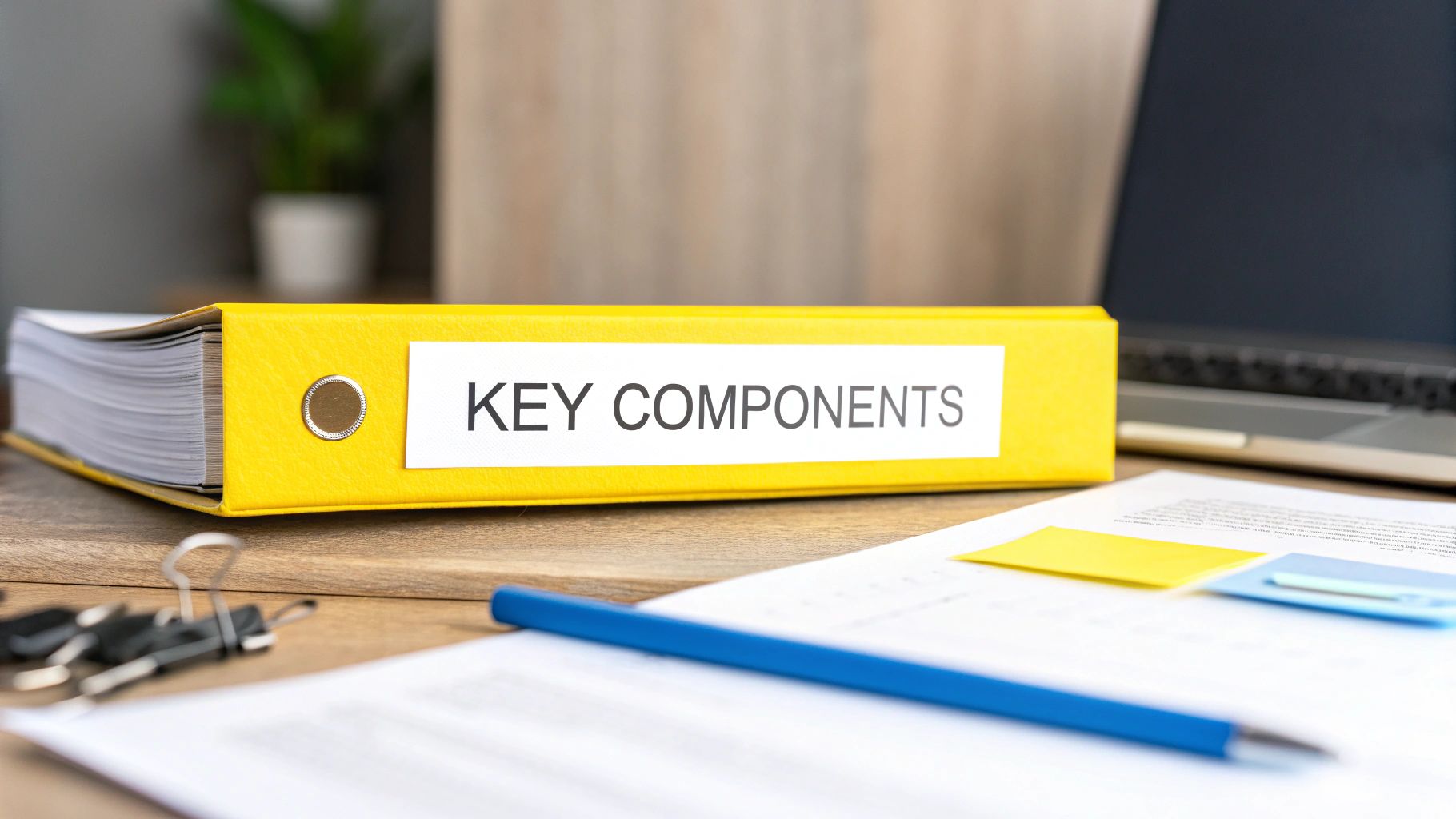
Opening a Land Information Memorandum (LIM) for the first time can feel a little intimidating. It’s packed with technical terms and official council jargon. But once you know what you’re looking for, that dense document transforms into an invaluable guide to a property’s past, present, and future potential.
Think of it as the property’s official life story, told by the council. A standard Wellington City Council LIM report gives you a detailed summary of all the information they hold on a property. You can find out more about their process directly on their website. Learn more about Wellington’s LIM application process.
What You Will Discover
Each section of the LIM gives you a different piece of the property puzzle. Here’s a simple rundown of what to expect:
- Rates and Water Information: This part confirms the current property rates, tells you if there are any outstanding amounts owing, and gives you details on the property’s water supply and meter.
- Drainage and Sewer Plans: This shows you where the public—and sometimes private—drainage and sewer lines are located. This is crucial information if you’re planning any future landscaping or building work.
- Consents and Notices: Pay close attention to this section. It lists all building, plumbing, and drainage consents that have been issued and are on council files, along with any official notices or orders against the property. An unconsented deck on a Mount Victoria villa, for example, would be flagged right here.
- Special Land Features: This is where the council highlights any potential hazards they know about, such as susceptibility to erosion, slippage, or flooding. This is especially relevant for homes in hillside suburbs like Karori and Ngaio.
- Zoning Information: The report spells out the property’s specific zoning under the Wellington District Plan. This dictates how the land can be used and what you can build on it, which is vital for understanding its future development potential. Our guide on Wellington’s zoning rules offers more insight into this.
It’s also important to remember what a LIM doesn’t show you. It won’t include detailed building plans or information on private agreements between neighbours. For that next level of detail, you might need to request the full property file from the council.
How a LIM Report Can Influence Property Negotiations

The details hiding inside a Land Information Memorandum are far more than just background information; they’re a powerful tool that can completely reshape property negotiations. A LIM report connects the dots between a property’s official paper trail and its real-world market value.
It gives both buyers and sellers a solid, fact-based foundation for their discussions. For both sides, knowing how to read between the lines is the key to reaching a fair deal.
Using the LIM as a Buyer
For a buyer, a LIM report can be your best friend, uncovering issues that give you real leverage to revise an offer. It shifts the negotiation away from subjective opinions and grounds it in documented facts, putting you in a much stronger position.
Let’s look at a few classic Wellington scenarios:
- Unconsented Renovations: You may discover that the gorgeous new extension on a Brooklyn home never received council sign-off. This could be a red flag, as it could become a costly compliance headache. This may give you grounds to make an offer that accounts for future risk and expense.
- Land Notations: The LIM for a funky Aro Valley property shows it’s in a known flood-prone area. That could seriously affect your insurance premiums and the future use of the property. It’s a perfectly valid reason to negotiate a price that reflects this ongoing risk.
- Earthquake Prone Notices: You find out that a Thorndon apartment building has an earthquake-prone notice. This is significant, as it means expensive strengthening work is likely on the horizon. You can find out more about how Wellington’s earthquake-prone deadlines affect property owners and use this crucial information to adjust your offer (However, this may be changing as I write this).
How Sellers Can Protect Their Property’s Value
If you’re selling, being proactive is always the best strategy. Getting your own LIM report before you list the property allows you to spot potential red flags and get ahead of them. This kind of transparency does more than just build trust with buyers; it protects your property’s value by taking bargaining chips off the table before negotiations even begin.
By getting out in front of any discrepancies, you control the narrative. This lets you position your property in its best possible light and drastically reduces the chances of a last-minute, lowball offer.
Navigating these conversations takes experience. As a local real estate professional, I use insights from LIMs to guide clients through negotiations smoothly, ensuring they feel confident and achieve an excellent result.
Wellington Suburb Spotlight: What to Watch For
A Land Information Memorandum isn’t a generic, one-size-fits-all document. Its true value comes alive when you read it with an understanding of the local Wellington suburb you’re looking at. The insights you’ll get from a report on a heritage property in Thorndon will be worlds away from what you’d find for a new build in Johnsonville.
Knowing what to look for based on a neighbourhood’s unique character is key. This is where a LIM report transforms from a simple document into a powerful tool. By understanding the specific geography, history, and development patterns of an area, you can interpret the data with a sharper, more informed eye.
Hyper-Local LIM Insights
Different suburbs bring different potential issues to the table. In Wellington’s hilliest areas, for example, land stability is always a primary concern.
- Historic and Central Suburbs: For properties in places like Thorndon, Te Aro, and Mount Victoria, pay extremely close attention to any mention of earthquake-prone building notices or heritage restrictions. These can seriously affect future renovation plans.
- Hillside Neighbourhoods: In suburbs such as Wadestown, Ngaio, and Brooklyn, the LIM’s notes on landslip risks, erosion potential, or special engineering requirements for retaining walls are critically important.
- Developing Areas: For rapidly growing suburbs like Johnsonville and Newlands, the zoning information is vital. It will tell you about potential nearby developments or infrastructure projects that could impact the property’s future value.
The following table breaks down a few common things to look for in specific suburbs.
Common LIM Report Findings in Key Wellington Suburbs
| Suburb | Potential LIM Report Item to Check For | Why It’s Important |
|---|---|---|
| Khandallah | Retaining wall consents and land stability notices. | Given the hilly terrain, ensuring all earthworks and walls are consented and engineered correctly is crucial for safety and insurance. |
| Mount Victoria | Heritage listings and character area restrictions. | These can limit your ability to alter the property’s exterior, affecting renovation or extension plans. |
| Karori | Flood plain or overland flow path information. | Parts of Karori are prone to flooding, and this information will highlight potential risks and may affect insurance premiums. |
| Island Bay | Coastal hazard zones and erosion risks. | Proximity to the coast means you need to be aware of any council-identified risks from sea-level rise or storm surge. |
| Newlands | Zoning for future developments. | As a growing suburb, the LIM will show if neighbouring land is zoned for higher-density housing or commercial use, which could change the area’s feel. |
This is just a starting point. Every property is unique, but being armed with local knowledge helps you ask the right questions and spot potential red flags much faster.
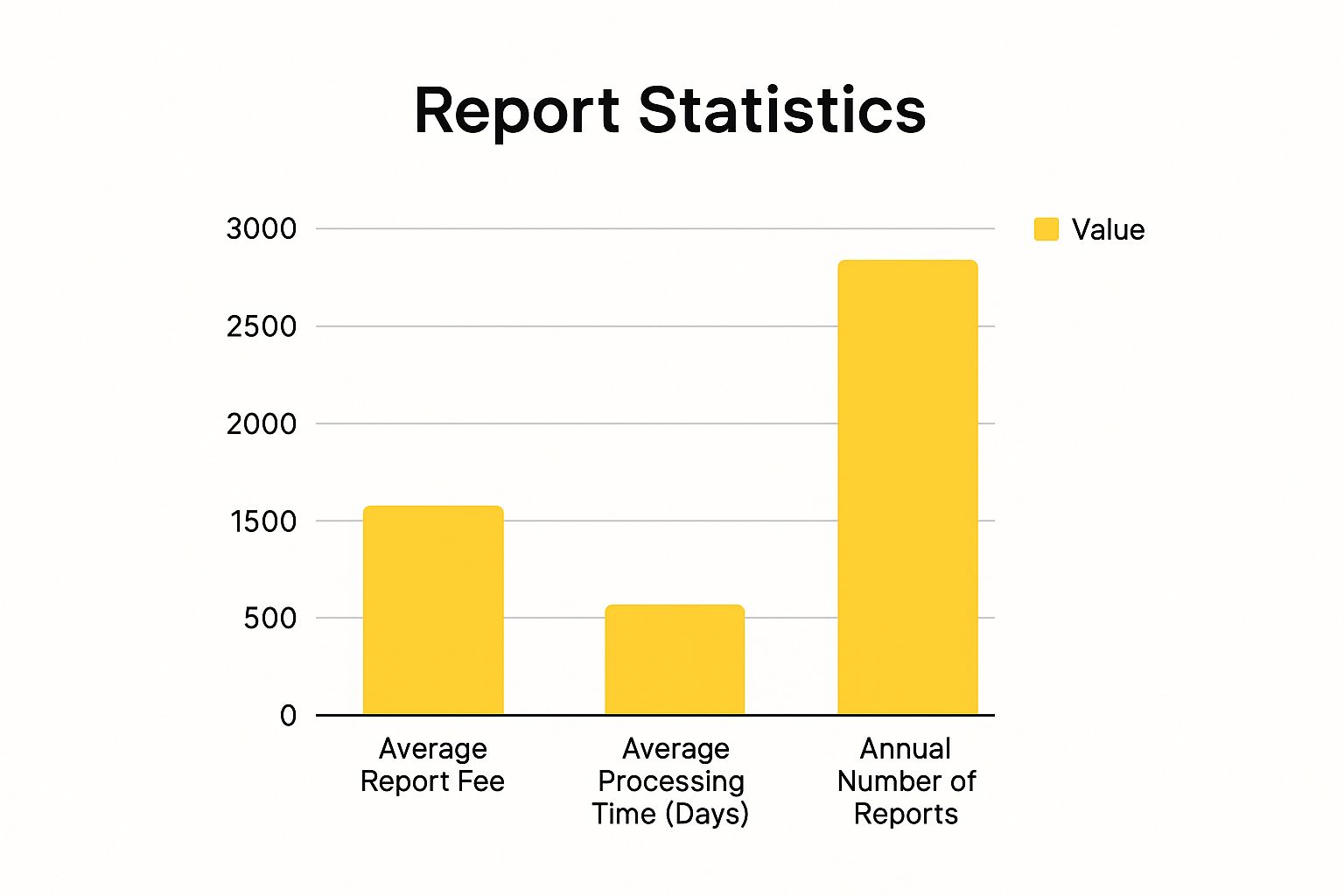
The sheer volume of reports processed each year shows just how vital they are to the city’s property market. My job as your real estate agent is to help my clients navigate these suburb-specific details so they can make confident and well-informed decisions. It’s about turning data into real-world peace of mind.
How to Get Your Wellington City Council LIM Report
Ready to take the next step? Getting a LIM report from the Wellington City Council is a straightforward online process. It’s a small step that brings a massive amount of clarity to any property deal.
Your Simple Application Checklist
You are welcome to contact me to help you order a LIM. Otherwise, before you go online, you’ll need a couple of things to make the process smooth:
- A recent Record of Title: Make sure it’s less than three months old to ensure all ownership details are up to date.
- Payment Method: You’ll need a credit or debit card handy to cover the application fee.
Once you have these ready, head to the council’s website and fill out the application form. The process is user-friendly, and you should receive an email confirmation within a couple of working days. The council’s ability to pull together these reports comes from a massive system managing over 200,000 individual property records in Wellington, constantly updated with thousands of annual building consents. You can explore more on the council’s open data portal.
This is where a trusted professional can really help. Navigating the application is one thing, but making sense of the final report is another. If your LIM uncovers anything complicated, If required, I have a reliable network of contacts for your consideration, from builders to lawyers, ready to provide you with advice and find clear solutions.
Your Top Questions About LIM Reports
The world of property reports can feel a bit confusing, so let’s clear things up. Here are answers to the most common questions from buyers and sellers across Wellington.
How Long Is a LIM Report Valid For?
A LIM report doesn’t have an official expiry date, but it’s best to think of it as a snapshot in time. Because council information can change, standard practice for any property transaction is to get a new one. This ensures you’re making your decision with the most current data available.
Should I Get a LIM Report if I’m Selling My House?
Yes, absolutely. Providing a recent LIM to potential buyers is a fantastic move. It shows you’re transparent and organised, which can seriously speed up the sales process. It gives buyers confidence and helps prevent unexpected issues from derailing negotiations later on, positioning you as a prepared and credible seller.
What’s the Difference Between a LIM and a Property File?
Think of a LIM as the official summary—a report highlighting the key information the council holds on a property. A property file, on the other hand, contains all the physical documents themselves, like the original consent applications and detailed building plans. You can dig deeper into the specifics of property ownership by reading about the different New Zealand property title types.
Can I Just Rely on the Seller’s LIM Report?
While it’s helpful when a seller provides a LIM, it is only valid on the day it is issued. It is strongly recommended that every buyer order their own. Getting your own report ensures you have a direct document from the council. This is a crucial part of your own due diligence and provides a vital layer of personal protection in the transaction.
Regardless of market conditions, having clear, factual information is the key to a successful property sale. As your local real estate agent I am consistently helping Wellington sellers achieve excellent outcomes by ensuring every detail is managed with care and professionalism. If you have any questions about your property or the selling process, feel free to reach out for a friendly, no-obligation chat.

.
.
.
.
.
.
.
.
.
.
.
.
.
Disclaimer: The real estate content shared on this blog is intended for general informational purposes only and industry observations. The content may reflect personal views or reference third-party sources, but it is not a substitute for tailored professional advice. Real estate decisions often involve legal, financial, and regulatory complexities, and readers should seek independent guidance from qualified specialists such as legal advisors, financial consultants, or compliance professionals before acting on any information presented here. No warranty is given as to the accuracy, completeness, or current relevance of the material.




